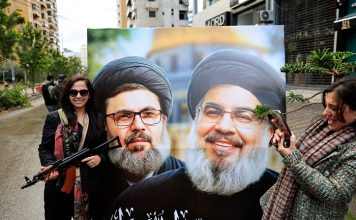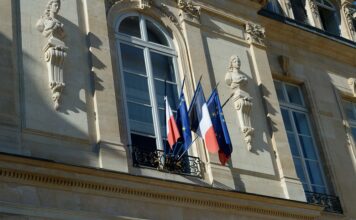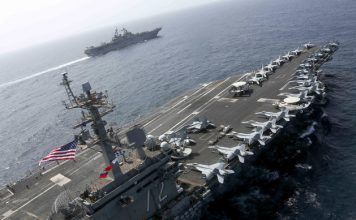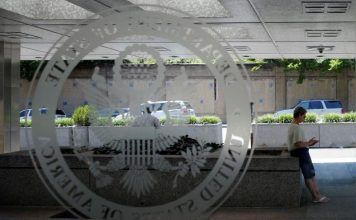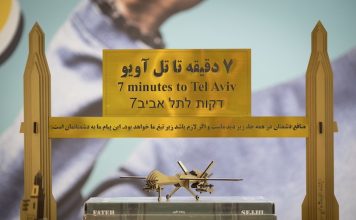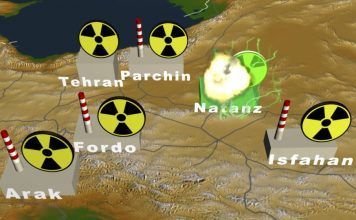By Parisa Hafezi
DUBAI, Oct 10 (Reuters) – Iranian security forces intensified a crackdown on anti-government protests in several Kurdish cities on Monday, as demonstrations elsewhere in Iran spread into the country’s vital energy sector.
Workers at Assaluyeh Petrochemical complex go on strike #Mahsa__Amini ##مهسا_امينی #IranRevolution2022 pic.twitter.com/UU7mP9tFIl
— Alireza Nader علیرضا نادر (@AlirezaNader) October 10, 2022
Workers of Asaluyeh Petrochemical Complex in southern Iran have gone on strike, and set tires on fire to block the road for security forces. pic.twitter.com/G8WD8WOnbz
— Iran International English (@IranIntl_En) October 10, 2022
Protests have swept Iran since Mahsa Amini, a 22-year-old from Iran‘s Kurdish region, died on Sept. 16 while being held for “inappropriate attire”, marking one of the boldest challenges to the Islamic Republic since the 1979 revolution.
While university students have played a pivotal role in the protests with dozens of universities on strike, unconfirmed reports on social media showed workers at Abadan and Kangan oil refineries and the Bushehr Petrochemical Project had joined in.
Iran‘s oil ministry was not immediately available to comment.
A combination of mass protests and strikes by oil workers and Bazaar merchants helped to sweep the clergy to power in the Iranian revolution four decades ago.
With U.S. sanctions imposed on Iran‘s oil exports over the country’s nuclear programme, analyst Karim Sadjadpour said large and sustained strikes among energy workers could bring the Islamic Republic to its knees.
“Iran is less dependent on oil as a percentage of GDP than they were in 1978, but energy exports are still the lifeblood of the economy,” said Sadjadpour, a senior fellow at the Carnegie Endowment for International Peace.
China, Iran‘s biggest oil customer, is one of the few countries that continues to do business with Iran despite sanctions. But an oil workers’ strike, experts say, could mean there would be no oil to export, legally or illegally.
A video on Twitter showed dozens of workers had blocked the road to the Bushehr petrochemical plant, in Assaluyeh on Iran‘s Gulf coast, chanting “Death to the Dictator”.
FIERCE CRACKDOWN
Unfazed by teargas, clubs, and, in many cases, live ammunition used by the security forces, according to rights groups, protesters across Iran have persist with demonstrators burning pictures of Supreme Leader Ayatollah Ali Khamenei, calling for the downfall of the clerical establishment.
Tensions have been especially high between authorities and the Kurdish minority which human rights groups say has long been oppressed – a charge the Islamic Republic denies.
Human rights group Hengaw reported a heavy presence of armed security forces in the Kurdish cities of Sanandaj, Saqez and Divandareh on Monday. It said at least five Kurdish residents were killed and over 150 injured in protests since Saturday.
Videos shared on social media showed protests in dozens of cities across Iran early on Monday, with fierce clashes between protesters and riot police in cities and towns across Amini’s native Kurdistan province.
The Iranian authorities have blamed the violence on an array of enemies including armed Iranian Kurdish dissidents, with the Revolutionary Guards attacking their bases in neighbouring Iraq a number of times during the latest unrest.
Iran has a track record of putting down unrest among its more than 10 million Kurds, part of a Kurdish minority whose aspirations for autonomy have also led to conflicts with authorities in Turkey, Iraq and Syria.
Heavy gunfire could be heard in several videos shared on Twitter by the activist 1500tasvir. A video showed several explosions creating blinding flashes in a neighbourhood of Sanandaj, the capital of the Kurdistan province.
Activists said on social media that several people, including two teenagers, were killed by security forces in the province. Reuters could not verify the videos and posts.
At least 185 people, including 19 minors, have been killed, hundreds injured and thousands have been arrested by security forces, according to rights groups. Blaming the protests on Iran‘s foreign foes, authorities said “rioters” have killed at least 20 members of the security forces.
(Writing by Parisa Hafezi; Editing by Tom Perry, William Maclean and David Evans)

